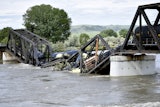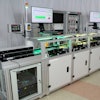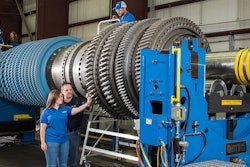Flow, pressure and temperature are the most important units of measurement when monitoring or controlling fluid in pipes. They are early indicators for problems that can have major implications for the overall business. Quite often, however, flow is the only parameter measured to understand what is happening inside the pipes. Flow measurement allows operators to know that the right fluid or gas is in the right place, at the right time.
Why is this important? Because inaccurate flow measurement can have serious and/or damaging ramifications for a company. Operators measure flow for four key reasons:
- Safety. Uncontrolled flow rates may cause temperature and pressure to reach dangerous levels.
- Product integrity. Flow can help ensure the right amount of blended materials are present at all times. This includes everything from processed food to gasoline.
- Efficiency indication. Companies can determine how efficient a process is by measuring the amount of each input that has gone into the product compared to the amount of product produced.
- Process variable control. Flow rate is measured and controlled during energy transfer applications.
Having a system in place to address these four key variables can mean the difference between making a profit or running at a loss for organizations.
Selecting the Right Tools
Even if a company knows it needs to measure flow, that doesn’t mean it knows the best way to do so. There are several options to choose from, from displacement flow meters, turbine meters and differential pressure flow meters to ultrasonic meters, vortex meters and Coriolis meters. Each type of flow meter has its own advantages and disadvantages. The decision of which technology to utilize is actually based on several factors, including the location of the pipe, the process in which it is involved and how frequently the measurements need to be taken, for example.
Most flow meters are integrated into a pipe and inserted into the stream of flow. Ultrasonic flow meters, in comparison, are not intrusive in the flow. Considered a “new” flow technology, ultrasonic flow measurement offers many advantages over competitive technologies.
Ultrasonic Flow Meters
According to a leading flow research firm, the ultrasonic technology market share is growing as the technology replaces older flow technologies. Improved electronic processing, increased diagnostics and a growing confidence in ultrasonic performance contribute, in part, to this growth.
Ultrasonic (UT) meters can measure both liquids and gases and they offer excellent accuracy, no drift, no pressure drop, no obstruction to the flow and no moving parts to require maintenance. They handle a wide variety of fluids and also extreme operating temperatures.
Ultrasonic flow measurement offers another important advantage over other flow technologies: it can be done from the outside of the pipe. Although the majority of ultrasonic installations are by spool piece and by insertion where the transducers are “wetted,” a clamp-on installation requires minimal process disruption.
Clamp-on fixtures with ultrasonic transducers strap or clamp onto the outside of either a new or existing pipe without the need to cut into the pipe or to shut down the process, saving time and money. Clamp-ons can be installed at any time, in difficult locations and without process contamination. This makes them suitable for temporary installations, or for situations where cutting into a pipe is impractical. They can be left in place for fixed installations or portable for moving around to different measurement points.
The Benefits of Clamp-On Flow Meters
Clamp-on meters positively impact the overall cost of flow monitoring and efficiency. Clamp-on meters offer ease of use so that operators can do their jobs effectively and efficiently. The major benefits of clamp-on flow meters are their versatility and cost-effectiveness. Key benefits include:
- Able to be used in non-conductive liquids, gases and steam
- Non-intrusive and do not cause a pressure drop
- They reduce disruption during installation because there is no need to shut down the process or cut into the pipe. Clamp-on flow meters can be installed on new or existing pipes and sit on the outside of the pipe. This saves time and money since no cutting into the pipe is required. They can be installed at any time, in difficult locations and with zero process contamination
- No welding means no extra parts, saving on both labor and costs. It also means no leakage, which prevents contamination
- No moving parts make for a long working life
- No periodic calibration is required
- They have low capital cost compared with other technologies
- One clamp-on meter can be used on a variety of pipe sizes and fluids and dual-channel meters can measure flow in two separate pipes using a second set of transducers
- Built to withstand harsh environments, hazardous use, variety of process parameters and extreme temperatures
- Able to measure both high and low flow
- Additional analog inputs for temperature transmitters allow measurement of energy flow rate in liquids
- Portable versions provide easy, temporary check of processes or of existing in-line meters
How Clamp-On Meters Work
Clamp-on flow meters use several ultrasonic measurement techniques, with transit time and Doppler being the most common. Doppler meters require the presence of bubbles and/or solids in the flow to reflect the transmitted ultrasonic pulses. Conversely, with transit time meters, two ultrasonic transducers act as both signal generators and receivers and are in acoustic communication with each other. The time interval between transmission and reception of the ultrasonic signals is measured in both directions. When there is fluid in the pipe, the downstream transit time is less than the upstream time, as the downstream pulses are accelerated by the flow and the upstream pulses are slowed by it. The difference in the two transit times is proportional to the velocity of the flow.
Clamp-on meters typically do not attain the accuracy of in-line meters, particularly those used for custody transfer or fiscal measurement in the oil and gas industry. This is mainly because of signal degradation caused by the pipe wall and liner, pipe centricity and human factors with installation. Even so, clamp-ons can achieve accuracy better than +/- 0.5 percent, with 0.2 percent being the norm. Their excellent repeatability makes them extremely reliable.
Clamp-On Meters In Action
In part due to the fact clamp-on meters sit outside of the pipe, they can be used to measure several types of fluids, ranging from ultra-pure water, clean liquids and high viscosity liquids to sewage and wastewater, corrosive and/or abrasive liquids and hydrocarbons. Some gases are also suitable for measurement with clamp-on meters, including superheated steam, natural gas, compressed air and nitrogen and oxygen. Clamp-ons can also differentiate between the different fluids that are sometimes carried by the same pipeline, which often happens in the petroleum industry.
For example, a U.S. federal agency chose a fixed installation liquid clamp-on meters from GE to measure flow from numerous points on its mechanical chillers in order to meet goals for reducing energy consumption in government buildings. The flow meters allowed facilities managers to manage energy usage and reduce their maintenance cost. In a similar use case for campus energy management, a university in the northeast U.S. found that GE’s clamp-on steam meters helped diagnose if an underground network of steam pipes supporting a 450-acre campus had capacity to power a campus expansion. These meters helped the university improve distribution accuracy, while lowering their maintenance and overall ownership cost.
Clamp-on meters can also validate the performance of other flow meters. For example, an oil company re-injected gas into wells in the Sahara Desert to maintain well pressure. Both orifice plate and in-line meters measured gas flow, but there was a discrepancy of 20 percent between the measurements. Technicians were able to use a portable gas clamp-on meter to compare the values, and validate the performance without interrupting the process.
Overall, the versatility and cost effectiveness of clamp-on flow meters qualify them for most applications and for a wide variety of industries. They have a proven track record and are accepted worldwide as viable options for accurately and efficiently measuring and recording the flow of fluid and gases.
Tom Michalowski is GE’s product manager of ultrasonic clamp-on and vortex flow meters.
This article originally appeared in the November/December IMPO print edition.























